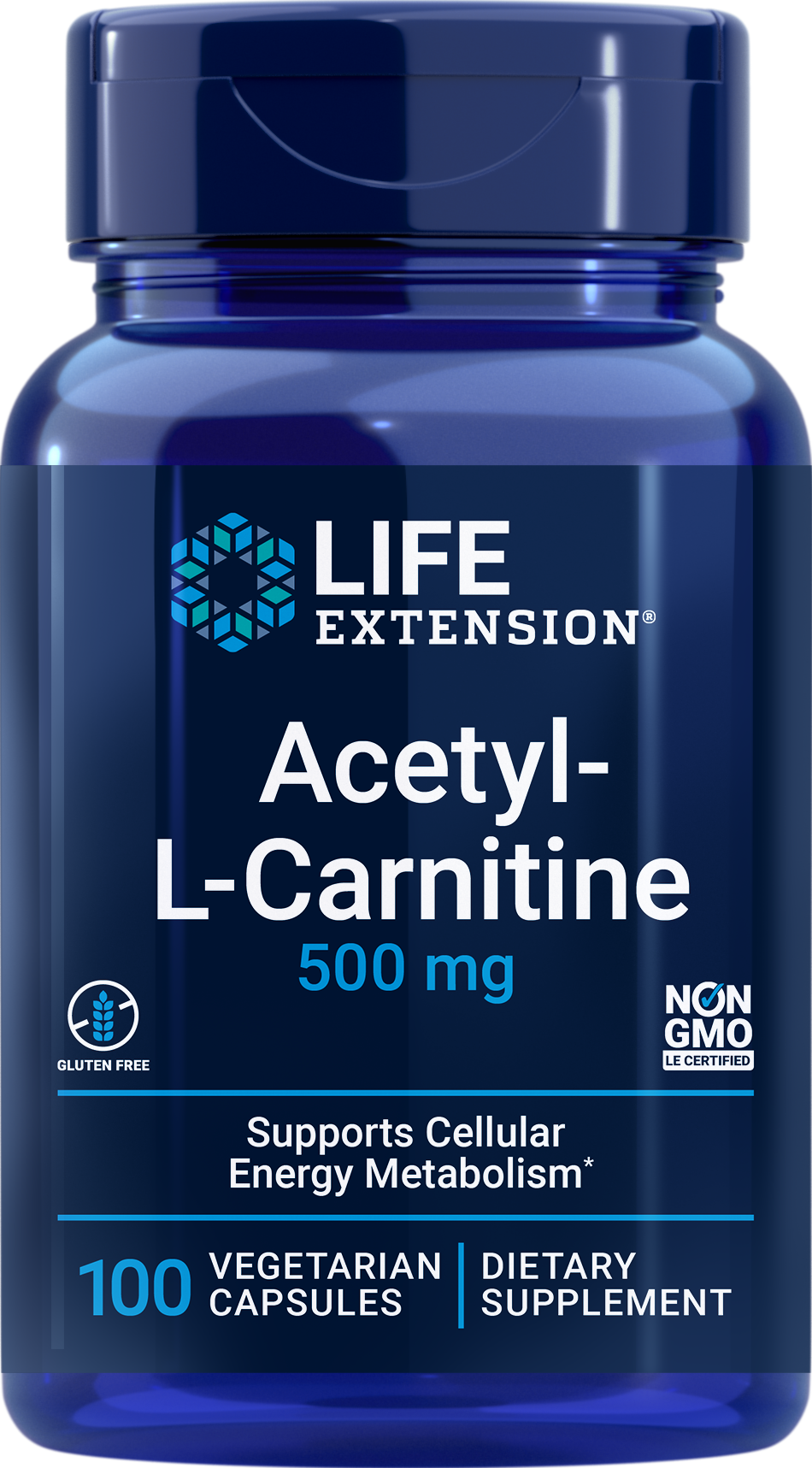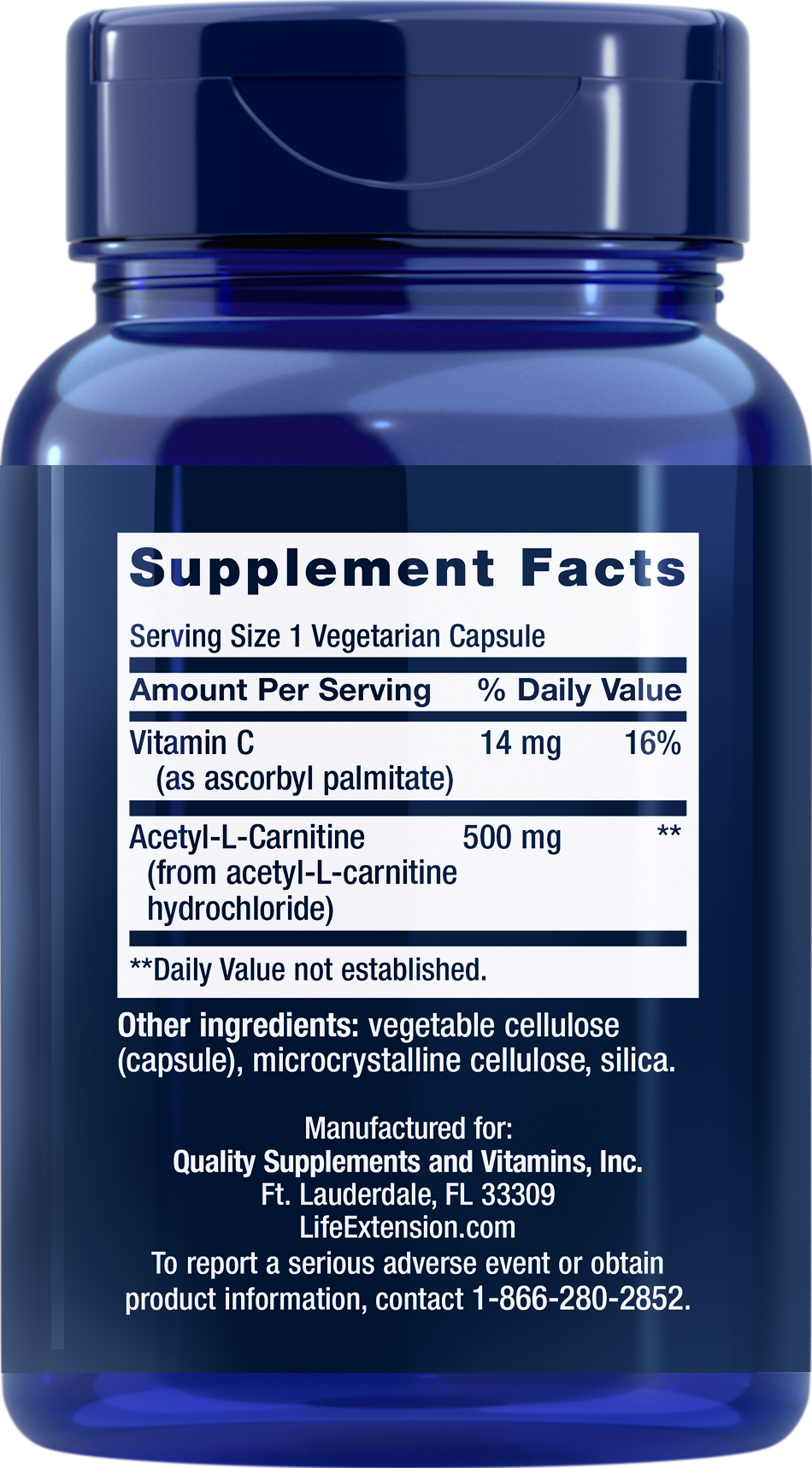Acetyl-L-Carnitine
Can support cellular energy metabolism
Acetyl-L-Carnitine
Can support cellular energy metabolism
For you, if you are interested in encouraging youthful cellular energy metabolism
The amino acid derivative in Acetyl-L-Carnitine can:
- Help maintain mitochondrial and cellular energy
- Support the nervous system
- Promote healthy mood and cognitive wellness
- Protect against oxidative stress
- Support cardiovascular health
Acetyl-L-Carnitine can promote peripheral nervous system comfort and support healthy mood, energy and overall well-being.

on orders over € 69
We have a 100 days return policy, not the standard 30 days!
Order before 11:00 CET, for same day shipping (Mon-Fri)
We can help you in 6 languages
L-carnitine a derivative of amino acids, is found in nearly all body cells. Its main role is to turn fat into energy by assisting in the transport of fatty acids into the mitochondria, the energy powerhouses of our cells.
Under normal circumstances, it is produced by our bodies. However, aging causes a decline in the production of cell energy.
What is acetyl-L-carnitine?
It's a form of L-carnitine that helps to decrease the effects associated with aging.
Acetyl-L-carnitine and L-carnitine are absorbed into the bloodstream efficiently. Both of them are effective at promoting the burning of fatty acids for energy production and being efficiently used by cells. (1-5)
This form of carnitine can also cross the blood-brain barrier and guard against oxidative damage and against toxins, like amyloid-beta peptide, in the brain.
The benefits of acetyl-L-carnitine
It may support youthful memory function, improve mitochondrial structure and function, inhibit age-related oxidative damage and restore the activity of key enzymes.
Acetyl-L-carnitine can also have wide-ranging benefits for nervous system wellness, including the central and peripheral nervous systems, and cognitive health, as well as positive mood. (6-11)
It has been shown to promote peripheral nervous system comfort, support healthy mood, energy and overall well-being. (12-17)
| ||||||||||||
Dosage and use | ||||||||||||
| ||||||||||||
Warnings | ||||||||||||
A food supplement should not be used as a substitute for a varied and balanced diet and a healthy lifestyle.
Store tightly closed in a cool, dry place. | ||||||||||||
- LPI. L-carnitine. Accessed 06/01/2019. https://lpi.oregonstate.edu/mic/dietary-factors/L-carnitine
- Front Biosci (Landmark Ed). 2016;21:1314-29.
- Adv Drug Deliv Rev. 2009;61(14):1332-1342.
- Ann N Y Acad Sci. 2004;1033:108-16.
- J Clin Hypertens (Greenwich). 2007;9(4):249-55.
- Expert Review of Neurotherapeutics. 2013;13(8):925-936.
- Zh Nevrol Psikhiatr Im S S Korsakova. 2011;111(9):16-22.
- Metab Brain Dis. 2011;26(4):281-9.
- Amyotroph Lateral Scler Frontotemporal Degener. 2013;14(5-6):397-405.
- Eur Neuropsychopharmacol. 2013;23(10):1219-25.
- Proceedings of the National Academy of Sciences of the United States of America. 2018;115(34):8627-8632.
- Clin Exp Rheumatol. 2015;33(1 Suppl 88):S82-5.
- Scandinavian Journal of Gastroenterology. 2011;46(6):750-759.
- J Interferon Cytokine Res. 2011;31(9):653-9.
- Am J Clin Nutr. 2011;93(4):799-808.
- J Diabetes Investig. 2016;7(5):777-85.
- Oncologist. 2013;18(11):1190-1.



